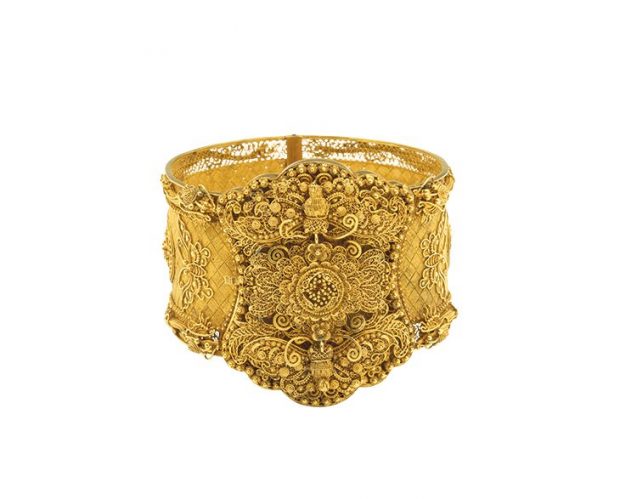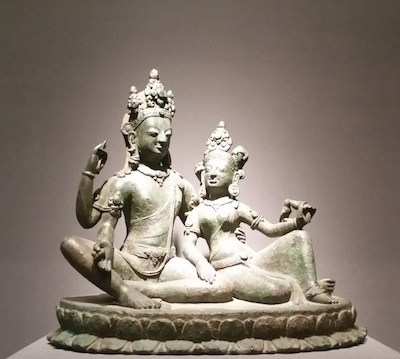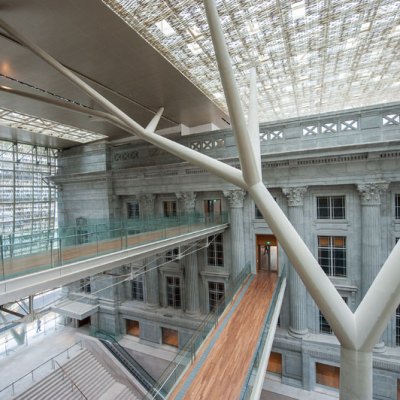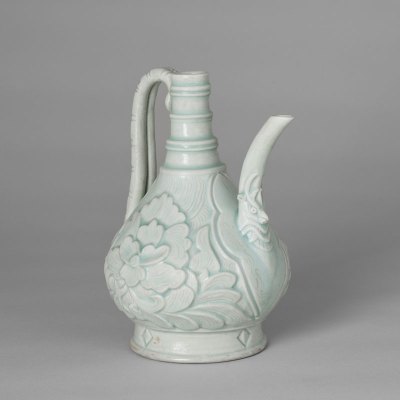A decade ago, Asian art dealers in New York scrambled to find a replacement for their most enticing spring ritual. The International Asian Art Fair, which had debuted in the mid 1990s at the Park Avenue Armory as the highlight of March events known as Asia Week, was cancelled during the economic downturn. Dealers instead formed a consortium to promote shows at their galleries, mostly in midtown Manhattan and on the Upper East Side. They handed out pedestrian-friendly maps, and emphasised that gallery visits could provide perks normally unavailable at fairs, such as servings of tea and access to backroom reference libraries. ‘We recognised that we had to work together,’ says Katherine Martin, the director of Scholten Japanese Art on West 58th Street.
The collaborative effort, now called Asia Week New York (AWNY), has thrived. It brings together about 50 dealers from the United States and abroad and has joined forces with auction houses and cultural institutions. The fair-without-a-fair offers a whiff of adventure, too, since New York’s Asian art galleries often operate by appointment only. Many visitors will make their first trips to spaces in narrow townhouses on side streets, climbing creaky wooden stairs or riding in glacially paced 19th-century elevators.
Gourd-shaped vase (after 1952), Tomimoto Kenkichi. Joan B. Mirviss (up to $200,000). Photo: Richard Goodbody

At this year’s event, the historical works coming to auction include a neolithic Chinese wheat-coloured vase (Bonhams, 18 March) and a 17th-century painting by the female artist Wen Shu of butterflies alighting on flowers (Christie’s, 19 March). There will also be a chance to see the Metropolitan Museum of Art’s recent acquisition of an 11th-century copper alloy statue from India depicting Shiva as Vanquisher of the Three Cities. Modern and contemporary fare ranges from images of conceptual artists spraying pigments across snowy riverbeds in ‘Radicalism in the Wilderness: Japanese Artists in the Global 1960s’ (at the Japan Society until 9 June) to the London-born, New York-based artist Alexander Gorlizki’s witty updates of Indian miniatures (at Cora Ginsburg Gallery). AWNY will shed light on millennia of intellectual and artistic exchanges and misunderstandings, and the aftermaths of wars. In a time of anger-driven support for walls to block migration and threatened trade wars, the annual ritual will provide tools for ‘making bridges of understanding’ between nations and cultures, as Mike Hearn, the head of the Met’s Asian art department, observed at an AWNY press preview.
Joan B. Mirviss, a dealer specialising in Japanese art and ceramics, has organised a retrospective (with a lavish bilingual catalogue) of the work of the ceramicist Tomimoto Kenkichi (1886–1963), who travelled to England and befriended Bernard Leach. Tomimoto encouraged his countrymen to study Western art and pursue invention in clay rather than repetition of traditional patterns. ‘Vessel Explored/Vessel Transformed: Tomimoto Kenkichi and His Enduring Legacy’ will explore Tomimoto’s inspirations including Aristide Maillol’s fleshy bronze women and William Morris’s fern repeats, as well as contemporary Japanese artisans influenced by Tomimoto. Mirviss says that few American collectors and institutions are aware of his work. She needs to tell his story, she explains, at a high-profile time like Asia Week.
Commemorative bracelet (1839–40), Guangzhou, China. Bonhams

The dealer Erik Thomsen is bringing out Japanese screens made between 1910 and the 1940s by artists who had taken their first trips abroad and mixed mineral pigments and gold to depict riots of red Indonesian flowers and layers of undulating Chinese mountains. The screens also represent what Thomsen describes as ‘a fascinating mix of East and West, with Japanese women in Western flapper dresses and Japanese sandals, walking a German shepherd or standing by a Christmas tree’. Records of the objects’ back-stories are hard to find, however, due to the number of artists and patrons who were killed or traumatised in wartime and the post-war collapse of the market for screens.
Equally challenging to document are the biographies of Japanese American artists who were sent to concentration camps in the American West and spoke little of the experience afterwards. Scholten is devoting a show to watercolours that the Tokyo-born artist and dealer Kakunen Tsuruoka painted in the 1940s while confined with his family at Poston ‘relocation centre’ in Arizona. Before the war he was based in San Francisco, and he painted views of its civic buildings as well as the Golden Gate Bridge and Yosemite peaks. He acquired antiques as far afield as China and Mongolia, and his intellectual circles included the playwright Eugene O’Neill and the Harvard museum curator Langdon Warner. During the Second World War, Tsuruoka sketched Poston’s barracks under ominous skies and its perimeter of purplish mountains and dead trees clawing at scrublands. After the war he quietly ran small businesses in Manhattan that dealt in frames, art and artificial flowers, and his wartime watercolours were mostly kept tucked away.
A gold bracelet in Bonhams’ 18 March sale has mysterious origins in the realm of opium deals gone wrong (estimate $20,000–$30,000). A Cantonese metalsmith made the piece around 1840 as a gift from Canton merchants for Ellen Wayles Randolph Coolidge, one of Thomas Jefferson’s granddaughters. She had briefly visited China with her husband, the Boston merchant Joseph Coolidge, who spent years at a time in Asia while she raised their six children. The bracelet is covered in symbols of luck, longevity, and fertility, including butterflies and grapes, and inscribed with a list of merchants’ names. No one knows why such an extravagant present was called for; Bruce MacLaren, a Bonhams senior specialist, said that locals may have wanted to make amends with Ellen for some past rough treatment of her husband. The auction consignor acquired the bracelet at an antique jewellery sale in Salem, Massachusetts (the Peabody Essex Museum there owns a silver cup that Canton merchants presented to Joseph Coolidge).
Guanyin (11–12th century), Dali kingdom, Yunnan, China. Christie’s New York ($4–$6m).

Collections partly formed during past Asia Weeks will also be breaking up this spring. Christie’s will hold sales for possessions from the late philanthropists Florence and Herbert Irving. Among the top lots is a multi-armed gilt-bronze figure of the androgynous deity Guanyin, who embodies compassion (estimate $4m–$6m). Made about 1,000 years ago in what is now Yunnan province in China, it is festooned with feathers and tassels. It came to the Irvings in the 1980s through the New York dealer Alice Boney, after a decade-long loan to the Denver Art Museum. A few components, including some limbs, have been lost. One can only wonder how the statue has survived so largely intact through a millennium of wanderings, and what horror and good fortune it has witnessed.
Asia Week New York is at various venues, from 13–23 March.
From the February 2019 issue of Apollo. Preview and subscribe here.



